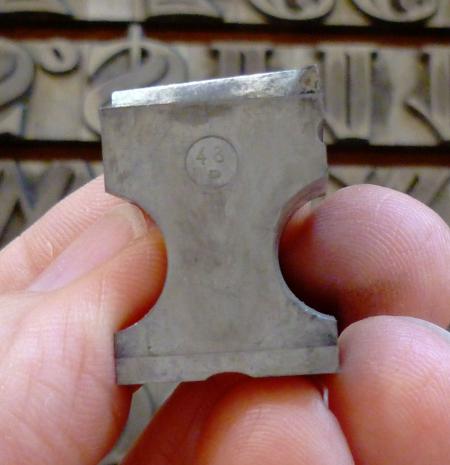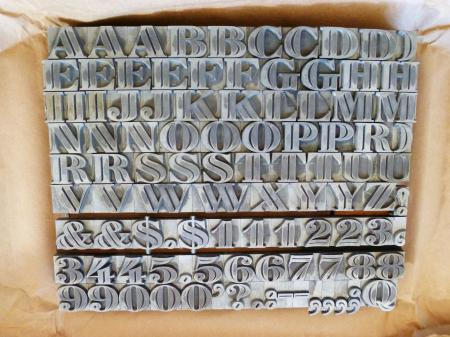What is this fat, open face?
I’m trying to identify this type I just bought. There are no lowercase letters. The photos show the 48-point size. There are smaller sizes with normal (not “waisted”) bodies. The letter on the pin mark is a P.
Thanks for your help,
Barbara

Unidentified openface pin mark.jpg

Unidentified openface.jpg
Barbara - Looks like Sphinx inline. Sorry I can’t help with identifying the pin mark. Best,
Denis
Thank you, Denis! On a digital version in MyFonts, it says, “Based on the Deberny & Peignot, circa 1925. Originally the inline was a capitals only font.” So I’m wondering if this might be a Deberny & Peignot casting, milled down? (I mic’ed it — it’s a perfect 0.918). If so, I also wonder how long they cast it.
Barbara
Oh, here’s something else I found on this RIT website:
After finalization of the merger [of Deberny and Peignot], Charles [Peignot] began to assume authority in acting upon his own artistic convictions in typeface design. Even though the foundry’s recuttings of classic types were popular, he once said, “The [type] revivals were not bad. But, because they were so humdrum, they led me to try a different approach.” … His first project in this vain [sic] was the 1924 typeface, “Sphinx,” a heavy Egyptian face with blunt serifs and high contrast between the characters’ thick and thin strokes. “Sphinx’s” quasi-geometric qualities were a reaction against the curvilinear forms of Art Nouveau faces like “Auriol” …
So could the P on the pin mark stand for “Peignot”? Just a newbie guessing here!
Barbara